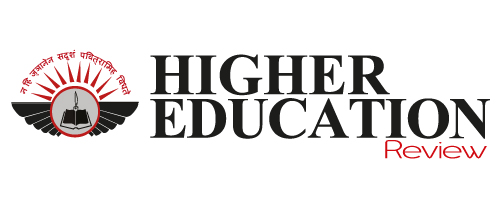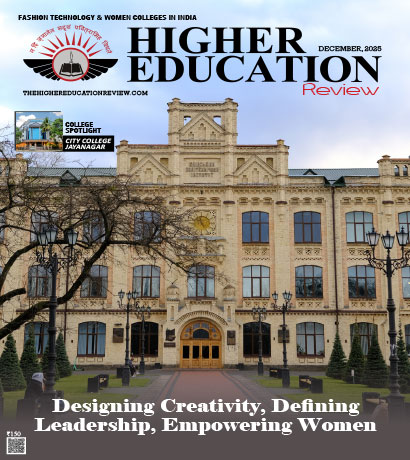Shaping a Future-Ready Workforce in the IT Industry
 Pankaj Khanna, Chief People Officer, Coforge, in an interaction with Higher Education Review, has shared his views and thoughts pertaining to how IT recruitment strategies should adapt to attract global talent while ensuring cultural and organizational fit and how organizations can build and promote a compelling employer brand. Pankaj Khanna brings over 30 years of expertise across diverse areas of Human Resources, including People Supply Chain, Recruitment and Workforce Management, Global Mobility, and HR Analytics.
Pankaj Khanna, Chief People Officer, Coforge, in an interaction with Higher Education Review, has shared his views and thoughts pertaining to how IT recruitment strategies should adapt to attract global talent while ensuring cultural and organizational fit and how organizations can build and promote a compelling employer brand. Pankaj Khanna brings over 30 years of expertise across diverse areas of Human Resources, including People Supply Chain, Recruitment and Workforce Management, Global Mobility, and HR Analytics.
In a rapidly evolving IT landscape, how can recruiters balance the need for technical expertise with the importance of finding candidates who align with the organization's culture and values?
Balancing technical expertise with cultural alignment is crucial in today’s fast-paced IT Services industry. While AI-led talent acquisition models and competency-based hiring help identify top talent, companies must also assess the candidate’sproblem-solving ability, adaptability, and collaboration to ensure a strong cultural fit.
With AI-powered talent acquisition systems organisations can streamline recruitment while ensuring candidates align with the values of trust, collaboration, and innovation. A strong onboarding and continuous learning framework are essential to integrate new hires into the company’s ethos. Structured assimilation programs, combined with role-based upskilling and leadership development initiatives, play a key role in helping individuals succeed in their new roles and grow within the company. By fostering an inclusive culture, recognizing excellence, and investing in growth, we create an environment where employees don’t just work—they thrive. For industry, the key takeaway is clear: hire for skills, but imbibe a culture where people grow with the organization.
With remote and hybrid work models becoming the norm, how should IT recruitment strategies adapt to attract global talent while ensuring cultural and organizational fit?
While remote and hybrid work models could be a norm in some industries, we believe the work-from-office approach helps us foster a balance between innovation, delivery and teamwork.
Companies are increasingly leveraging AI-driven hiring platforms, structured onboarding, and digital engagement initiatives to create seamless recruitment experience for employees and the organization. They invest in virtual engagement programs, mentorship initiatives, and promote digital tools that bridge the gap between remote employees and company culture. Regular town halls, internal communications, social platforms, and office-centric engagement activities can help strengthen employees' sense of belonging and trust within the company.
Employer branding plays a critical role in attracting top IT professionals. How can organizations build and promote a compelling employer brand?
A strong employer branding is key to attracting and retaining top IT talent. Organizations must prioritize a compelling Employee Value Proposition (EVP) through recognition, inclusivity and career growth opportunities. It’s important to bring people’s first culture to life through meaningful experiences such as celebrating key milestones for employees to reinforce a culture of appreciation. At Coforge when we hit a milestone of the $1 billion revenue in FY23, we celebrated it by gifting iPads to all 21,000+ employees, reinforcing our commitment to rewards and recognition. Emphasizing holistic well-being, career mobility, and continuous learning through Learning platforms, partners, global, scalable academy structures, helps in creating a future- ready workforce. Showcasing these initiatives through external communications and social media can further strengthen employer branding.
Employer branding goes beyond the workplace, it’s about giving back to the community and fostering future talent. With active engagement with students through workshops, hackathons, and guest lectures, we’re building brand awareness while demonstrating commitment to education and growth.
Furthermore, catering to a large employee headcount across different geographies, the focus has always been on sustainable initiatives. These initiatives are designed to be adaptable, enabling any team member to adopt and deploy them as needed. To build standardization, each new learning initiative is run past all the team members for dissemination, teach back and internal certification.
Many IT professionals prioritize continuous learning and career growth. How can companies align their recruitment efforts with these expectations to attract the best candidates?
IT professionals today seek employers who prioritize upskilling and provide clear career progression paths. Organizations should integrate learning ecosystems, certification programs, and structured development initiatives into their talent strategy to meet these expectations.
To attract the best IT candidates, companies can align their recruitment efforts during campus hiring with the expectations of continuous learning and career growth. Companies can offer training programs, certifications, workshops and established mentorship programs where campus hires can learn from experienced professionals. This not only aids in skill development but also helps build a supportive work environment.
By investing in specialized learning for emerging leaders, including dedicated programs for women leaders, companies enable individuals to grow confidently into leadership roles.
In light of the increasing competition for top IT talent, what are some cost-effective recruitment strategies that can help maintain a balance between quality hires and budget constraints?
Companies should aim to become a talent magnet — an employer that naturally attracts top candidates through its strong brand reputation, employee satisfaction, and growth opportunities. Being a talent magnet means fostering a culture where employees thrive, and external candidates aspire to join. This can be achieved this through a strategic blend of cost-effective recruitment methods. A strong employee referral program for instance, encourages internal recommendations, ensuring cultural alignment while reducing hiring expenses. This approach significantly contributes to our strong retention rates.
Direct sourcing and digital recruitment channels—including targeted social media campaigns—are increasingly replacing traditional agency-based hiring. These approaches broaden reach, enhance employer branding, and improve candidate engagement in real time.
Finally, internal talent mobility and upskilling are gaining prominence. Organizations that actively develop their existing workforce and promote from within not only reduce dependency on external hiring but also boost employee satisfaction, loyalty, and long-term retention.
Companies can also strengthen their university engagement through campus ambassador programs and partnerships with educational institutions to build early connections with skilled talent in high-demand domains.
Prioritizing internal mobility and upskilling not only reduces external hiring needs but also boosts retention and employee morale. By aligning these strategies, companies can effectively manage recruitment costs while securing top IT talent in a highly competitive environment.
With younger generations dominating the IT job market, what innovative recruitment strategies can attract millennial and Gen Z talent, and how can organizations meet their career expectations?
Younger professionals prioritize purpose-driven work and seek employers that contribute positively to society. Companies should emphasize their social impact initiatives and sustainability efforts to resonate with these values. Additionally, fostering a culture of continuous learning and career growth is essential. Offering personalized learning journeys, mentorship programs, and opportunities for skill certification or tuition reimbursements can make organizations more appealing.
Creating a dynamic employee experience through flexible workspaces, digital collaboration tools and Communities of Practice (CoPs) enhances engagement and connection in hybrid work environments. Promoting a vibrant workplace culture through authentic social media content like including employee stories, team celebrations, and purpose-driven campaigns also strengthens employer branding. Beyond salary, younger talent values holistic compensation packages that include mental health support, wellness programs, generous paid time off, and financial assistance for learning and development. By aligning with these expectations, organizations can effectively attract, engage, and retain the next generation of IT talent.

